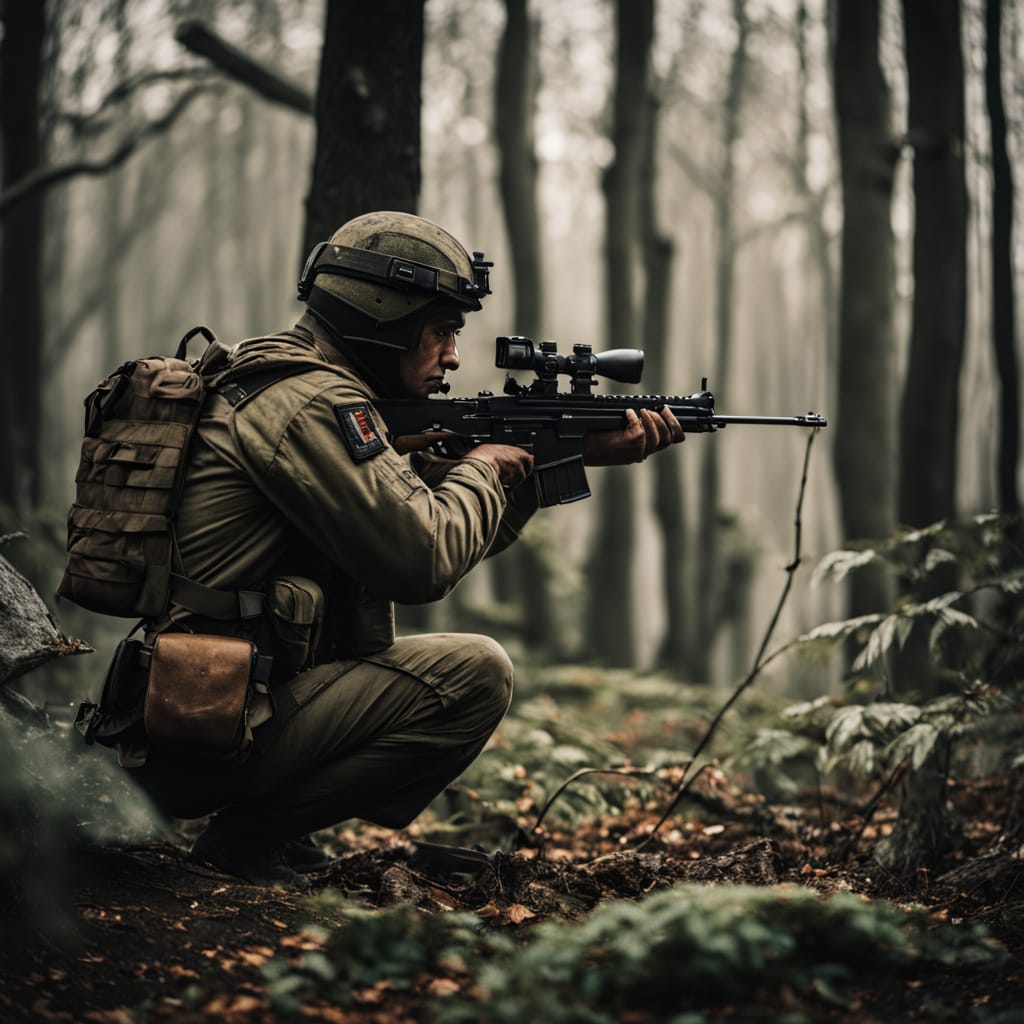The Fascinating World of Air Soft: A Comprehensive Guide

Air Soft has gained significant global traction as an exciting, strategic, and adrenaline-filled sport. Combining elements of teamwork, tactical play, and realism, it offers players a chance to immerse themselves in simulated combat scenarios. Originating as a niche hobby, it has evolved into a worldwide phenomenon. Its popularity spans continents, appealing to both amateurs and professionals alike. This blog delves into the history, global appeal, amateur and professional gameplay, rules, and socio-political significance of Air Soft.
The Origins and History of Air Soft
It traces its roots to Japan in the early 1970s. Strict firearm laws in Japan made gun ownership nearly impossible for civilians. Enthusiasts sought alternatives, and the invention of non-lethal replica firearms fulfilled this desire. The first Air Soft guns, called “soft air guns,” were spring-powered and fired small plastic pellets.
During the 1980s, advancements in technology led to the development of gas-powered and electric-powered guns. These innovations enhanced realism, accuracy, and performance. As interest grew, manufacturers began exporting Air Soft equipment to other countries, including the United States and Europe.
The 1990s marked a turning point. Organized games began to emerge, with enthusiasts establishing formal rules and field designs. The sport’s appeal transcended recreational shooting, evolving into a structured activity with elements of strategy and teamwork.
Today, it is a global industry, with dedicated fields, leagues, and even themed events. Despite its humble beginnings, the sport now attracts millions of participants annually.
The Global Popularity of Air Soft
It is played in almost every corner of the world. It has particularly strong followings in countries like the United States, Japan, the United Kingdom, and the Philippines. The sport thrives because of its accessibility and inclusivity.
In the United States, Air Soft fields and retailers are abundant. Events range from casual weekend skirmishes to large-scale competitions like “MilSim” (Military Simulation) events. Europe has also embraced the sport, with countries like Germany, France, and Italy hosting annual tournaments.
Asia remains a hub for Air Soft innovation and gameplay. In Japan, the sport enjoys a cult-like following, while in the Philippines, it is popular for both recreation and corporate team-building. Southeast Asian countries often host cross-border competitions, fostering camaraderie among enthusiasts.
The Middle East has also seen a growing interest in Air Soft, particularly in urban environments where simulation games offer a unique recreational outlet. Similarly, South America is emerging as a market, with Brazil and Argentina showing increased participation.
How Amateur Air Soft is Played
Amateur Air Soft focuses on enjoyment, skill-building, and camaraderie. It is popular among youth groups, schools, and community organizations. Many fields cater specifically to beginner players, offering rental equipment and guided sessions.
Youth leagues are particularly impactful, providing a safe environment for teenagers to learn teamwork and discipline. Schools occasionally incorporate Air Soft into extracurricular activities, emphasizing strategy and communication. Safety is paramount, with players wearing protective gear and adhering to strict rules.
Most amateur games take place in outdoor fields, forests, or abandoned buildings. Scenarios vary, from simple team deathmatches to complex missions involving objectives like hostage rescues or flag captures. Players are encouraged to work together, utilizing tactics and communication to succeed.
The accessibility of Air Soft makes it appealing. Equipment ranges from budget-friendly starter kits to high-end replicas. Many players begin as amateurs before joining more competitive leagues.
Professional Leagues and Competitions
The professional Air Soft scene is growing rapidly, with leagues and tournaments emerging worldwide. Events attract top players, showcasing their skills in high-stakes matches.
In the United States, leagues like American MilSim and Lion Claws host annual competitions. These events feature elaborate scenarios, professional referees, and prizes for winning teams. Players often train year-round to compete at these levels.
Europe is home to some of the most competitive leagues. The United Kingdom Airsoft League (UKAL) and similar organizations emphasize fair play and skill development. International tournaments in Europe often draw players from neighboring countries, fostering a sense of unity.
In Asia, Japan’s Airsoft Players League (APL) stands out as a leader. The league organizes events that blend traditional gameplay with innovative formats. Similarly, the Philippines’ National Airsoft League (NAL) attracts teams from across the region.
MilSim events deserve special mention. These large-scale simulations replicate real military operations, often spanning several days. Participants immerse themselves in roles, using realistic tactics and strategies. MilSim appeals to those seeking a more immersive Air Soft experience.
The Political and Social Significance of Air Soft
It is more than just a sport; it carries political and social significance. By providing a non-lethal alternative to firearms, it allows participants to explore military strategy without real-world consequences.
Socially, it fosters teamwork, leadership, and communication. Players must rely on one another to achieve objectives, breaking down barriers of age, gender, and background. It is common to see diverse groups of players forming lasting friendships through the sport.
Air Soft also serves as an educational tool. Many players gain insights into military history, tactics, and technology. Organized events sometimes feature historical reenactments, helping participants understand significant battles.
Politically, the sport raises awareness about firearm safety. Advocates emphasize the importance of proper handling and respect for replicas. Countries with strict gun laws often support Air Soft as a controlled alternative to actual firearms.
Understanding the Rules of Air Soft
The rules of Air Soft ensure safety, fairness, and enjoyment. Each game begins with a briefing, where referees outline the objectives and regulations.
The most fundamental rule is honesty. Players must acknowledge when they are “hit” by a pellet and exit the game area until the next round. This honor system maintains the integrity of the sport.
Protective gear is mandatory. Players wear goggles, masks, and often full-body armor to prevent injuries. Air Soft guns are regulated to ensure they fire within safe velocity limits, typically measured in feet per second (FPS).
Gameplay scenarios vary widely. Common formats include team deathmatch, capture the flag, and domination. In objective-based games, players work to complete missions while avoiding elimination. Rules often dictate boundaries, time limits, and respawn mechanics.
MilSim events add an extra layer of complexity. Participants adhere to strict role-playing guidelines, simulating real-world combat operations. These events may include rules for medics, ammunition limits, and specific objectives.
Field-specific rules are common. For example, indoor arenas may enforce stricter FPS limits to accommodate close-quarters combat. Players must familiarize themselves with these regulations before participating.
Conclusion
Air Soft is a dynamic and inclusive sport that has captured the hearts of millions worldwide. Its journey from a niche hobby in Japan to a global phenomenon highlights its universal appeal. Whether played casually or professionally, the sport offers something for everyone.
Its impact goes beyond entertainment. It promotes teamwork, strategic thinking, and cultural exchange. It provides a safe environment to explore military tactics while fostering friendships and community spirit.
With its growing popularity, Air Soft is poised to reach even greater heights. From local fields to international competitions, the sport continues to unite people through shared passion and adventure.




